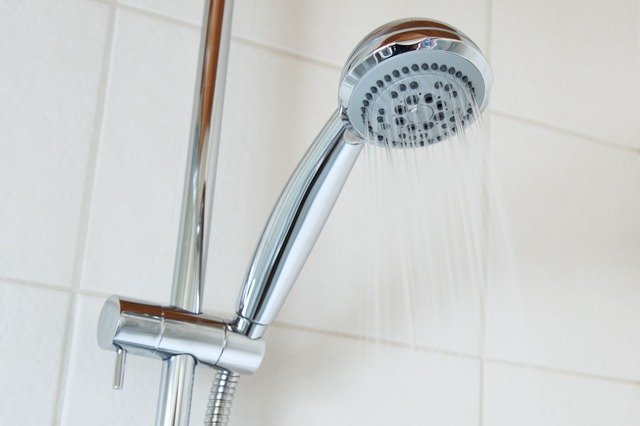By Tim Lambert
Washing in the Ancient World
The Egyptians are known for their cleanliness (they bathed frequently) and they used many cosmetics. Meanwhile in Babylon before 2,000 BC a form of soap was made. The Greeks knew that diet, exercise and keeping clean were important for health. The Greeks even invented a form of a shower, which sprayed bathers with water.
Most Greeks washed in a bowl on a pedestal called a louterion though the rich sometimes had bathrooms. People rubbed themselves with olive oil and then rubbed it off with a tool called a strigil.
The Romans also knew that dirt encourages disease and they appreciated the importance of cleanliness. They built aqueducts to bring clean water into towns. In Roman towns, an important building was the public baths. In Roman times people went to the baths not just to get clean but also to socialize. Roman Baths consisted of a frigidarium or cold room, an epidarium or warm room, and a caldarium or hot room. You usually finished with a dip in a cold pool. To clean themselves Romans rubbed their skin with oil and scraped it off with a tool called a strigil. (The Romans also made soap).
Roman women also used razors, pumice stones, tweezers, and depilatory creams to remove unwanted body hair.
Washing in the Middle Ages
In the Middle Ages, there were bathhouses in many towns where people could pay to have a bath. Furthermore in Northern Europe in the Middle Ages, people took sweat baths.
In the 14th century, Edward III installed a bathroom in the Palace of Westminster. Other people made do with wooden tubs in their bedrooms.
Furthermore in the Middle Ages, there was an important soap-making industry in England (although many people made their own soap at home). In the Middle Ages, people used combs and tweezers. They also used toothpicks and mouthwash.
In the Middle Ages in monasteries streams provided clean water. Dirty water was used to clean toilets, which were in a separate room. Monks also had a room called a laver where they washed their hands before meals.
Baths and Showers 1500-1800
Most Tudors cared about their appearance. People carried mirrors made of glass or steel. They also carried combs and used tweezers, ear scoops, and bone manicure sets. In the Summer people sometimes had a bath in the local river. Sometimes they heated a cauldron of water and had a strip wash. Or they could have a ‘dry wash’ by rubbing themselves with clean linen.
In the 16th century, bathrooms were very rare but Henry VIII had a bathroom in Hampton Court Palace. It had a simple boiler for hot water.
In the 17th century, people used toothpicks but in the latter part of the century, toothbrushes were introduced. (Toothbrushes came from China. They were first mentioned in 1498).
People also made scented soaps. Then in 1767 Englishman William Feetham invented the first modern shower. However, in Britain, showers did not become common until the late 20th century.
Washing in the 19th Century and 20th Century
In the mid 19th century middle-class homes began to have bathrooms. Having a bath was also made much easier when Benjamin Waddy Maughan invented the gas water heater in 1868. The electric water heater was invented in 1889 by Edwin Ruud. Working-class houses with bathrooms were first built around 1900 and in the 1920s council houses were built with bathrooms. However, at that time bathrooms were still a luxury. As late as the early 1960s many homes in Britain did not have a bathroom.
From about 1800 portable metal bathtubs gradually replaced wooden ones and in the 19th century, some people used hand-pumped showers. A Frenchman named Alexandre-Ferdinand Godefrey invented the hairdryer in 1890. Paper towels were invented by Arthur Scott in 1907.
In the 19th century, toothpaste was sold in jars until 1892 when Washington Sheffield invented the collapsible toothpaste tube. Meanwhile, in 1888 the first modern deodorant was invented. It was called Mum.
The first safety razors for men were sold in 1901. Women first began to shave under their arms in the 1910s. The first razor for women was introduced in 1915.
In the 19th century, most homes also had a scullery. In it was a ‘copper’, a metal container for heating water for washing clothes. The copper was filled with water and soap powder was added. To wash the clothes they were turned with a wooden tool called a dolly. Or you used a metal plunger with holes in it to push clothes up and down.
Wet clothes were wrung through a device called a wringer or mangle to dry them. In the USA John E Turnbull invented the clothes wringer in 1843. In the UK Robert Tasker invented one in 1850. The ‘modern’ clothes peg with a spring clamp was invented by David M Smith in 1853.
Simple hand-operated washing machines were invented in the 18th century. The first electric washing machine was made in 1907. In Britain, washing machines first became common in the late 1950s and 1960s. Meanwhile, the electric clothes dryer was invented in 1935 by a man named J. Ross Moore. The first laundromat opened in Fort Worth, in 1934. The first laundrette in Britain opened in 1949.
Joel Houghton invented the first dishwasher in 1850. A Frenchman named Eugene Daquin invented another version in 1885. However, Josephine Cochrane invented the first successful dishwasher in 1886. By 2009 36% of households in Britain had a dishwasher. Steel wool cleaning pads were invented in 1913.

Meanwhile, soap was rationed in Britain from 1942 to 1950.
People used to wash their clothes with soap flakes. The first synthetic detergent was invented in Germany during the First World War. In the following decades, detergents were gradually improved and became more common. Today washing is much easier than it was in the past.
Last revised 2024